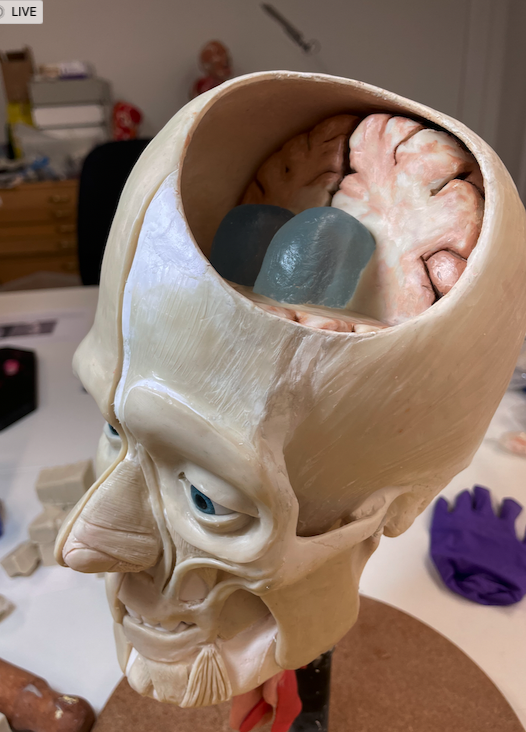Adult Congenital Hydrocephalus
Congenital Hydrocephalus is when excess fluid, usually cerebral spinal fluid, builds up in the brain when the baby is developing. Without treatment, children with this condition can result with permanent brain damage and have the life expectancy of under 12 months; with rare cases of children living to a couple years more. This model demonstrates the facial and muscle developments in extremely rare cases if the child living to an adult age. The oldest person documented with this case and without treatment is from the 18oo’s, having lived to the young age of 25. Following the lives of multiple children with this condition, the muscles have been altered to illustrated the expected final development when reaching adult age.
Many of these cases, with untreated individuals, show an abnormal frontal development with the pressure of the growing brain pressing against the skull. When reaching this age, the fontanelle suture in babies should be permanently developed and fuse the skull together. Resulting in slight alterations to the temporal and parietal areas from the increasing pressure. Larger symptoms of this condition are shown more predominantly in the frontal and occipital bones that are mainly affected during the developing ages. The frontal bone protrudes forward with the swelling brain since the internal ventricles are expanding due to buildup of fluid, causing the orbicularis oculi to form a downwards motion in the corner of the muscle. The occipital bones protrudes further out than normal because of the connection to the spine and origin of the cerebral spinal fluid.
















